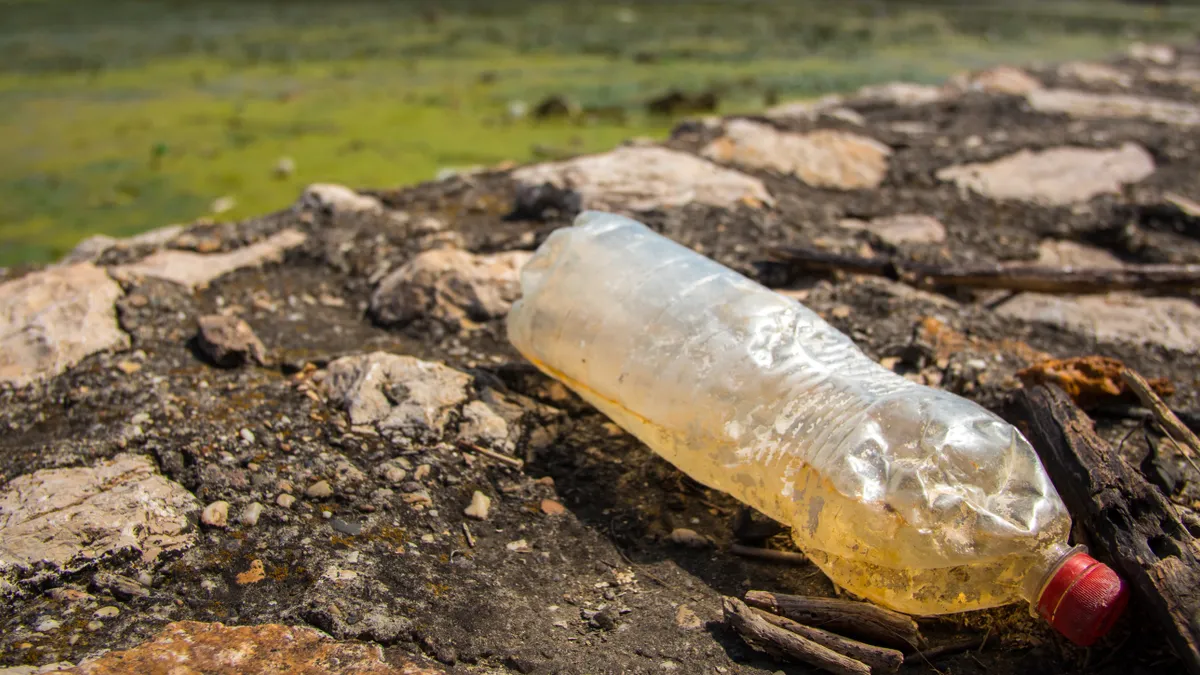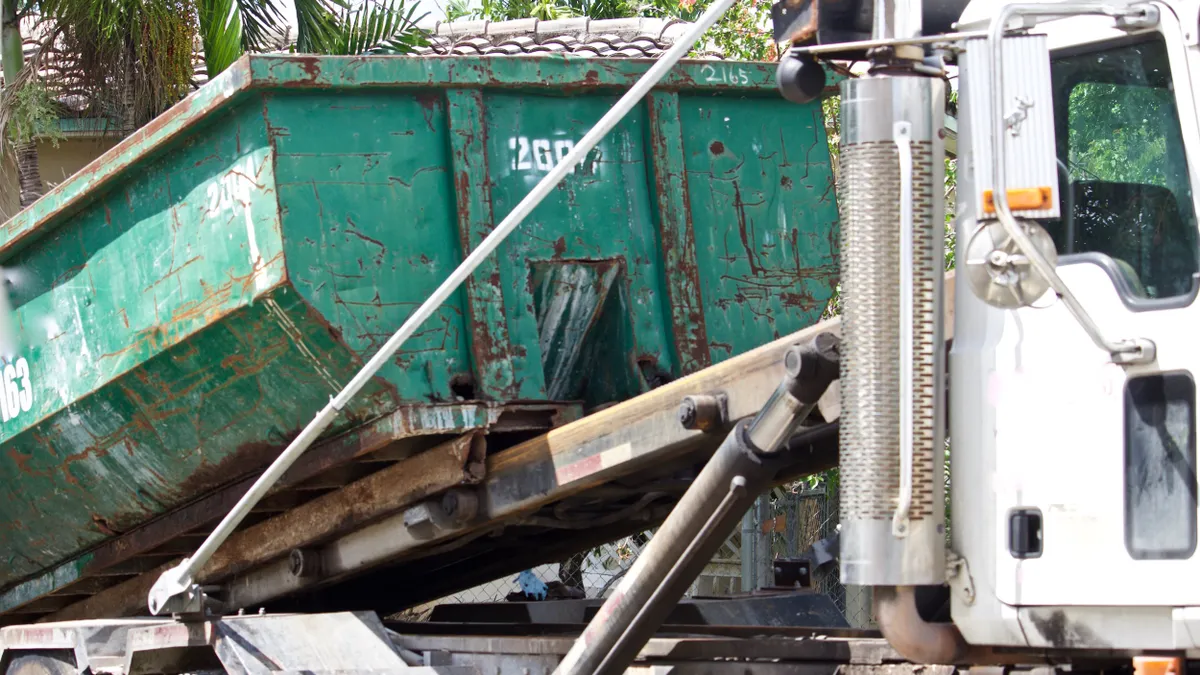UPDATE: Feb. 10, 2021: Verra and the 3R Initiative on Wednesday launched a previously announced plastic stewardship initiative, which includes a Plastic Waste Reduction Standard and Guidelines for Corporate Plastic Stewardship. Participating companies can now purchase plastic credits from projects that meet the standard, which Verra manages. The standard was piloted across 24 projects in 18 countries.
Dive Brief:
- The Plastic Waste Reduction Program, a market-based crediting system intended to drive investment in plastics recovery, is on track for an early 2021 launch. The project is backed by the 3R Initiative, a group whose founders include packaging companies such as Nestlé, Tetra Pak, and Danone, along with Veolia and Lloyd's Register. The latest version is currently open for public comments until Aug. 23.
- Verra, a nonprofit specializing in standards for carbon credits and related areas, is leading the process. The plan is to create a standardized accounting system for activities including "waste collection from the environment, development of new municipal infrastructure, waste picker recyclable material collection, and development and/or scaling up of new recycling technologies."
- Once submissions are verified by a third-party auditor, entities could sell credits others might buy to offset their own plastic production or show progress toward sustainability goals. Pilot projects using the standard are underway in multiple countries, including the United States. The Recycling Partnership (TRP) is using the system to track results from a 2019 collection cart deployment in Sarasota, Florida.
Dive Insight:
The 3R Initiative was launched last year by corporate members – along with BVRio and Verra – and advisory members including Conservation International, South Pole, Systemiq, Natural Capital Partners and McKinsey.org. The Plastic Standard Development Committee also includes producers Dow and Mars, plus groups working on plastic issues such as Plastic Bank, World Wildlife Fund, Lonely Whale and rePurpose.
This effort is seen as a way to enhance investment in plastics recovery efforts, something many major petrochemical and consumer packaging companies have set targets to achieve. While a growing number of entities currently exist to direct corporate investment into grant or loan funding for such activities, some see this new option as a unique and complementary addition to that toolkit.
"This investing mechanism allows the finance to flow directly to the plastic recovery or recycling efforts that are going on outside of the corporate value chain," said Sinclair Vincent, manager of standards development at Verra. According to Vincent, companies such as Danone and Nestle prefer a verifiable standard "to ensure that what's happening on the ground is robust, rigorous credible and safe as far as social and environmental impacts go.”
That accountability is considered especially relevant for efforts to enhance recycling infrastructure or recover plastic waste in the environment from countries in certain regions, but the concept is also applicable to work in countries such as the U.S.
Scott Mouw, senior director of strategy and research at TRP, said the standard presents "an intriguing possibility of adding yet another piece to the portfolio of capital that can be deployed." While many major plastic producers and users currently invest in projects through groups like his, TRP has outlined an even greater level of funding to achieve circular economy goals.
“For the next leap in tonnage to take place there has to be a pretty substantial deployment of capital to get community recycling programs to work better," said Mouw, adding cities could possibly benefit from participating and brands also want more options. “They’ve got publicly declared goals around this and they have an organizational mission to increase the recycling of plastics ... but they don’t have their own pathway."
Last year in Sarasota, TRP rolled out new collection carts using funding from the Coca-Cola Foundation and has been inputting data about the uptick in plastics recovery into Verra's system. Based on this initial experience, Mouw said it will be important for the credits to "have a price that’s going to motivate a broad set of stakeholders" and make the time spent submitting data feel cost-effective for a range of participants.
Vincent is mindful of these factors and said one option is for groups of related projects to be submitted together. Hypothetically, that could allow TRP, haulers or MRF operators to submit for activities happening across multiple municipalities. Vincent said pricing may differ depending on the actions, but anticipated "recycling credits will likely sell for a higher price.” Following next year's launch, it is possible standards for other material types could be added and the system is being designed to accommodate that.
The standard is also being developed to potentially interact with extended producer responsibility (EPR) systems, which is another way it could be scaled up. Vincent said the standard is not currently being piloted as part of any EPR programs, but discussions are underway.
Heidi Sanborn, executive director of the National Stewardship Action Council, said she had not heard the concept of a crediting system come up as a necessity in North American EPR discussions yet. While she welcomed discussions with producers looking to reduce plastic, Sanborn said she is generally skeptical of market-based initiatives that may not lead to the levels of sustained corporate investment that EPR supporters say new policies could.
"The financing needs to come from the producers, period," said Sanborn, adding an initial concern about the credit system concept is “they’re trying to create a perception of a new accountability mechanism to ensure that they’re not really having to pay for this."
Vincent said Verra is aware of the critique that companies could mainly purchase credits to offset their current levels of plastic production and said source reduction is still the preferred approach. Yet she also believes some amount of plastic usage can still be expected near-term, so a credit system could account for that while enabling a transition period to lower usage.
"A company couldn’t just reduce its emissions from one day to the next, there’s got to be some sort of bridge there to help them do that," said Vincent, referring to Verra's experience with carbon markets as an example of how it could work. "I think that’s all going to lead us toward a place where we can have reduced plastic in the environment and only be using plastic where it’s absolutely necessary."
Correction: A prior version of this article did not accurately identify 3R Initiative advisory member McKinsey.org.
















